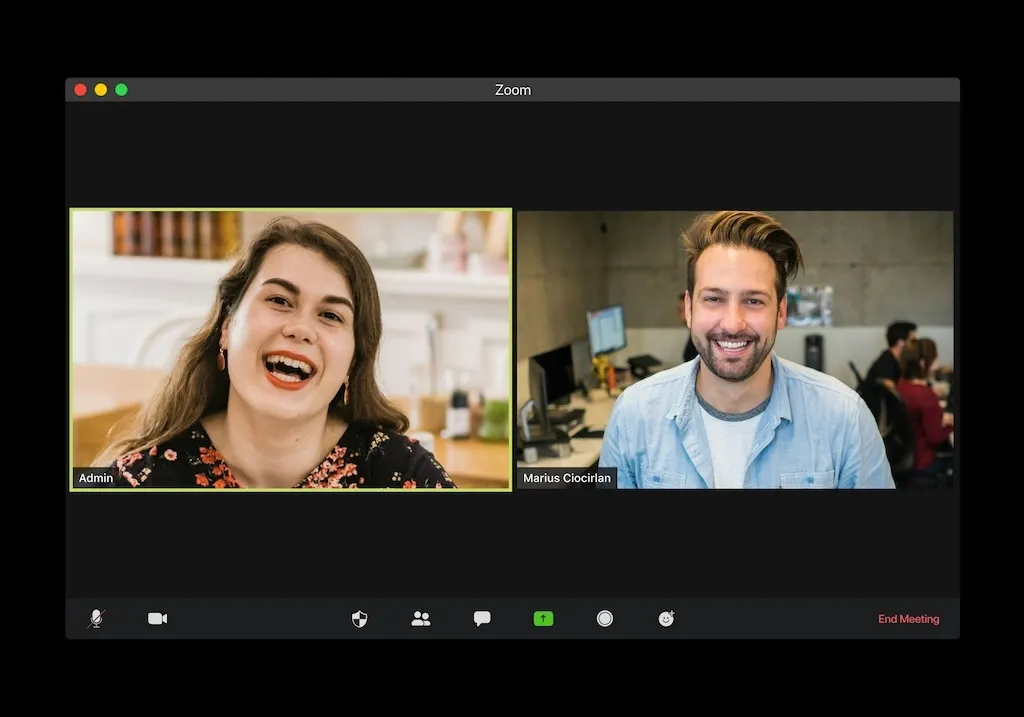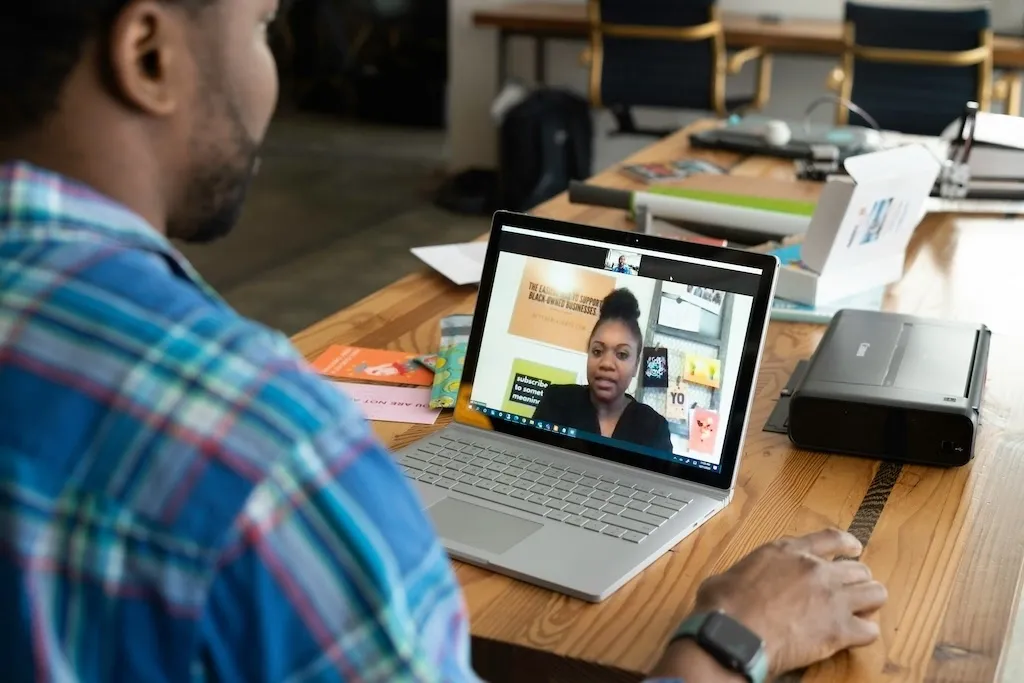What is Zoom Fatigue and How to Prevent it
Remote work has made video calls an everyday part of our professional lives. While platforms like Zoom and Google Meet help keep teams connected, they can also lead to a growing problem: Zoom fatigue. This term refers to the exhaustion people feel after spending long hours on video calls, and it has been the focus of several scientific studies.
One of the most notable studies comes from Stanford University, where researchers developed a “Zoom Exhaustion & Fatigue Scale” to measure the impact of prolonged videoconferencing on mental health. The research revealed that excessive eye contact, the “mirror effect” of seeing yourself on screen, and reduced mobility are some of the main reasons video calls can be so draining. It’s not just about feeling tired—this fatigue can affect your body, mind, and emotions all at once.
In this article, we’ll look at what causes Zoom fatigue, how to spot its symptoms, and simple ways to avoid it.

What is Zoom fatigue?
Zoom fatigue is the mental, emotional, and physical exhaustion that comes from spending too much time on video calls. Unlike in-person meetings, video calls demand constant attention, both visually and mentally. This heightened focus can leave you feeling unusually tired, even after relatively short meetings.
It’s not limited to Zoom either—this term broadly covers fatigue caused by any video conferencing platform. As more companies adopt hybrid or fully remote work models, understanding and addressing this problem is very important to maintain productivity and the overall well-being of your employees.
What are the causes of Zoom fatigue?
There are several reasons why video calls can be so tiring, and understanding these causes can help us better manage them.
Too much eye contact
In video meetings, everyone’s faces are often visible at the same time, creating an unnatural level of eye contact. Unlike in-person meetings, where eye contact shifts naturally, video calls make you feel like you’re being stared at constantly. This feeling can get intense and make you feel overwhelmed.
Increased cognitive load
Video calls require your brain to work harder. You’re not only listening to what’s being said but also trying to interpret facial expressions, tone of voice, and body language—all through a small screen. This added effort can increase your cognitive load and quickly become exhausting.
The mirror effect
Most video platforms show your face alongside everyone else’s, and seeing yourself on screen during meetings can make you more self-conscious. You might start focusing on how you look or how others are seeing you, which can be distracting and stressful. This is known as the "mirror effect," and studies suggest it can add to feelings of anxiety.
Reduced mobility
Video calls often require you to stay seated and in front of a screen for long periods. Unlike in-person meetings, where you can move around or stretch, video calls often keep you sitting in one spot for a long time. This lack of movement can lead to stiffness, discomfort, and even back or neck pain.
Missing non-verbal cues
In face-to-face conversations, body language and gestures play a big role in communication. On video calls, it’s harder to pick up on these cues, especially if the connection is poor or someone’s camera is off. This makes conversations feel less natural and more mentally taxing.
Lack of breaks
In a physical office, you’d usually get small breaks between meetings—walking to a different room, grabbing a coffee, or having a quick chat with a colleague. With back-to-back video calls, these natural pauses disappear, leaving little time to recover.
Technical issues
Lagging video, poor audio quality, or connectivity problems can make meetings frustrating. This is especially true if your system frequently slows down and you need a quick fix, like how to fix with CleanMyMac system out of application memory issues. You might have to repeat yourself or strain to understand what someone else is saying, which adds to the mental load.

Symptoms of Zoom fatigue
Zoom fatigue can show up in many ways, and recognising the symptoms is important so you can take steps to address it.
Reduced productivity
If you find it harder to complete tasks after a day filled with video calls, it might be due to fatigue. Mental exhaustion from video calls can leave you with less energy to focus on your work. You might find yourself making more mistakes or struggling to meet deadlines.
Mental exhaustion
The constant need to concentrate during long hours on video calls can leave you feeling mentally wiped out. Processing so much information can take a toll on the brain, and you might struggle to think straight, stay creative, or make decisions effectively.
Physical symptoms
Sitting in one place and staring at a screen for hours can cause headaches, eye strain, and neck or back pain. Some people also experience blurry vision or dry eyes after long video calls. These physical symptoms are common indicators of Zoom fatigue.
Anxiety and social exhaustion
Being “on” all the time during video calls and the pressure to appear engaged and presentable can make you feel anxious, especially if you’re naturally introverted or uncomfortable in social settings. Over time, this can lead to social burnout.
Trouble sleeping
Zoom fatigue can also affect your sleep. The mental strain from excessive screen time can make it harder to relax and fall asleep at night.
Irritability
Feeling constantly tired can affect your mood, making you more irritable or short-tempered with colleagues, family, or friends, ultimately leading to disassociation from the outside world.
Lack of motivation
As this fatigue builds, it can severely affect your productivity during work; you may start feeling unmotivated to join meetings, contribute ideas, or even complete tasks.

How to reduce Zoom fatigue?
While video calls are often necessary, there are simple steps you can take to make them less draining:
Keep meetings short
Try to keep your meetings brief and focused. The longer the meeting, the more tiring it becomes, so aim to stay on track and avoid unnecessary discussions. Limit your meetings to 30 minutes, which is usually enough to discuss the main topics.
Avoid scheduling consecutive Zoom meetings
Back-to-back meetings can be overwhelming. Try to leave a gap between video calls so you can take a breather. Even a 5–10-minute break can make a big difference in how refreshed you feel.
Hide self-view
If seeing yourself on the screen makes you self-conscious, you can turn off the self-view option; most video call platforms offer this feature. It can help you focus on the conversation rather than worrying about how you look.
Avoid multitasking
While it might seem productive to answer emails or complete other tasks during a meeting, multitasking divides your attention and increases mental fatigue. Try to stay present and save other tasks for later to reduce the strain on your brain.
Take short breaks
After each meeting, step away from your desk for a few minutes. Stretch, grab a drink of water, or simply close your eyes for a moment to rest before jumping into the next task. These short breaks can help reset your mind and body.
Use other communication methods
Not every discussion needs a video call. For quick updates or simple discussions that don’t require face-to-face interaction, use email, messaging apps, or phone calls instead.
Adjust screen settings
Use features like “speaker view” instead of “gallery view” to reduce the number of faces on the screen. This helps minimise distractions and makes it easier to focus.
Encourage meeting-free days
If your team can manage it, set aside one or two days a week without any meetings. This gives everyone more time to focus on their work without interruptions.

Is Zoom fatigue here to stay?
As remote and hybrid work models continue, video calls are likely to remain a part of our professional lives, and Zoom fatigue may remain a challenge. But we don’t have to simply accept it. Being mindful of how we use these video conferencing platforms and taking small steps to balance our workload better can help reduce their negative effects.
Employers and individuals alike must prioritise healthy habits and boundaries to create a more sustainable work environment so that this fatigue does not become an inevitable part of the remote work experience.

Conclusion
Zoom fatigue is a common issue many remote workers face, but it’s manageable with the right approach. By understanding its causes and recognising its symptoms, you can take proactive steps to protect your well-being. Remember, it’s not about eliminating video calls altogether but finding a balance that works for you.
